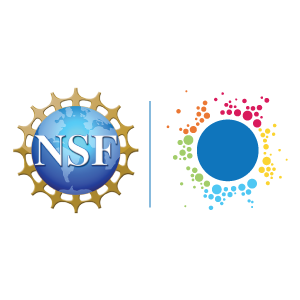STEM PUSH Network Launches Communications Training for Stakeholders
By Alyssa Briggs and Veronica Gonzales
TIES (backbone organization for STEM PUSH)
This is a test. Please read the following two paragraphs and then answer the question that follows.
Paragraph #1 – STEM is a great way to engage students and launch them on meaningful academic career trajectories. Students who engage in STEM in early grades are more likely to follow a concrete STEM trajectory throughout their schooling and lives.
Paragraph #2 – Robert and Mary are students in a first grade class where they learn math by racing insects across the room. In second grade, they continue to have many immersive STEM experiences, including figuring out what solutions are good for cleaning pennies. Every year, Robert and Mary’s interest in STEM deepens. By the time they reach high school, they are members of a pre-college STEM program where they conduct real experiments in a hospital lab and are exposed to STEM career options. In college, Mary majors in engineering and Robert chooses biology. They both complete their degree programs and are now starting new jobs with companies they learned about in their pre-college STEM program.
Here is the test question:
Which paragraph do you remember best? #1 or #2?
If you’re like most people, you are going to remember paragraph two.
Here’s why: paragraph two tells a story about two students with tangible details that are easy to understand. Both paragraphs seek to say the same thing – that students exposed to STEM early in their learning journeys are likely to continue engaging in it. Paragraph two is powerful because it shows us how that happens instead of tells.
“Show, don’t tell,” is one of the basic rules of effective communications. Integrating people and details whenever possible will better engage your audience and help your message be understood and retained.
Stories and details evoke emotional responses. They humanize the people and situations you are describing and the issue for which you are advocating. Techniques like storytelling are simple but essential to effective communication.
The STEM PUSH Network, like other NSF-supported projects, is deeply committed to sharing its work with a variety of audiences. Early on, it recognized the importance of prioritizing communication and of coming to a shared understanding of the rules and techniques that make communication effective.
The STEM PUSH Network seeks to change long-standing traditions of making decisions and understandings of what we determine holds value for students. Essentially, the STEM PUSH Network’s charge is to change the culture. Cultural changes are most effective with good, new stories.
The STEM PUSH Network has planned communications training for its network members and stakeholders. Led by TIES, the backbone organization for the STEM PUSH Network, the communications training offers a high-level overview of topics ranging from the critical role of storytelling to the importance of avoiding acronyms (when possible).
Here are seven best practices for written and verbal communication:
- Storytelling is key: use stories and details to illustrate concepts and ideas.
- The most effective communicators are good listeners.
- Active listening involves paying close attention to what the other person is saying, asking clarifying questions, and rephrasing what the person says to ensure understanding (“So, what you’re saying is …”)
- Effective communicators engage their audience by asking questions, tailoring content to what their audience is interested in and calling out relevant examples. Try to be mindful of who your audience is and use appropriate language, vocabulary, and points of reference. (For example, if you are addressing a group of biotechnology students and professors, it would be wise to use examples that deal with using living organisms or something else relevant to their field.)
- In spoken communication, be sure to read non-verbal signals to help determine if your message is being understood. (If someone in the front row is texting or sleeping, you may need to step up your game and work to integrate more relevant material.)
- Avoid acronyms when possible. (“NSF” and “STEM” are commonly understood in the field, but when you combine them with other acronyms it can confusing.) It is rarely wise to assume your audience knows what the acronym stands for, and the full name may be more informative.
- Be aware of your non-verbal cues and signals. In face-to-face presentations, maintain as much eye contact as possible.
Read STEM PUSH’s communications toolkit here.

